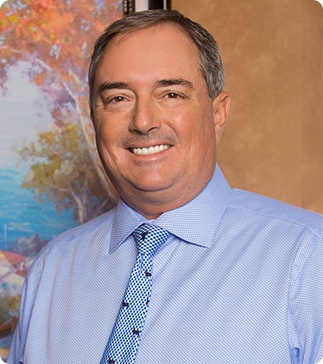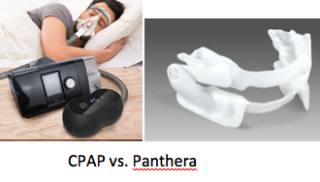
More Dental Health Articles
Sleep Apnea: CPAP Is Not the Only Option

Sleep apnea, a serious condition characterized by brief periods of no breathing during sleep, is most often treated with CPAP (continuous positive airway pressure) also known as “the mask.” While the mask is quite effective in treating sleep disordered breathing initially, about half the patients who try it end up not using it because it can be inconvenient and uncomfortable. Alternatives to CPAP include surgery to remove excess tissue, implanted stimulation devices, weight loss, and oral appliances.
Oral appliances, originally designed to reduce snoring, are now being prescribed for mild and moderate cases of sleep apnea, and also for patients who can’t tolerate the CPAP machine. They are reported to be effective up to 85% of the time, and are generally much more comfortable for the patient.
There are many different oral appliances designed to reduce sleep apnea, and the most common ones work by pulling the lower jaw and tongue forward. This creates more space at the back of the throat, where the obstruction most often is located. The original appliances were quite bulky, as are most of the over-the-counter varieties, but modern technology has allowed dentists to create very light, very comfortable custom fitted oral appliances that are effective and durable. Many patients prefer these newer devices, such as the Panthera, to the older bulky devices and the CPAP machine.
Recently, another oral appliance called the DNA (day and night) appliance, can actually cure sleep apnea in some cases. This oral appliance works by stimulating the upper jaw to grow and create more space for the tongue, which in turn creates more space at the back of the throat. At the upper jaw grows, the roof of the mouth tends to flatten out a bit, giving more room in the nose to breathe (the roof of the mouth is the floor of the nose.) Since DNA treatment can be quite lengthy, another version of the DNA call the mRNA (mandibular repositioning night appliance) can be used to hold the jaw forward until the upper jaw is wide enough to accommodate the tongue.
I have personal experience with all of these appliances. I wore one of the old bulky appliances for many years to treat my snoring. When I later developed sleep apnea I treated it with a more modern appliance similar to the Panthera, and found it comfortable and effective. When I learned of the DNA appliance, I went through the required training and tried the appliance for myself. Although it took over a year, I was able to eliminate my sleep apnea with just moderate growth of my upper jaw.
As with any medical condition, it is important to know all the options, and to understand the while one option may be perfect for one patient, it may not be appropriate for the next patient.
Other Articles You May Find of Interest...
- The Importance of Phase I Orthodontic Treatment for Children Aged 8-10
- Retainers in Riverdale, NY: Choosing the Best Option for Your Smile
- Discover Top-Quality Dental Care in Rockford IL
- Pregnancy & Hormonal Gingivitis: An Essential Guide
- Straighten Your Teeth, Improve Your Health
- Dental Implants For Edentulous Patients
- Dental X-Rays Explained: Procedures, Uses, And Frequency

















